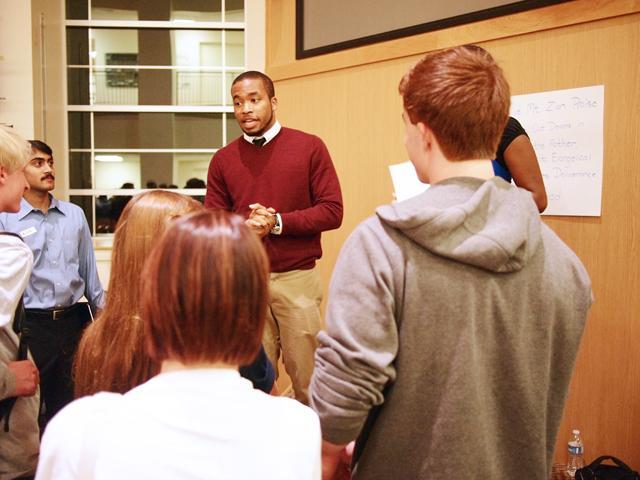Though a great deal of attention is often placed on the more obvious examples of racism and sexism, such as hate crimes and overt discrimination, the problem of stereotyping remains a constant problem in American society. In order to shed a better light on what it’s like being stereotyped, CHASS Multicultural Association for Students, in association with the Collegiate 100 of N.C . State and Zeta Phi Beta, hosted Don’t Hate the Player, Hate the Game.
The event allowed students to take part in an interactive examination of how stereotyping comes into play in real world situations. Participants were provided with a sticker with various colored symbols that represented categories such as race, class and sexual orientation.
Students moved throughout the room to different tables, where they would be faced with situations involving judgments based on stereotyping. Each table was representative of a sector of society such as a restaurant, a car dealership or a high school, among others.
At the courthouse, lawyers made assumptions of the nature of a crime and someone’s guilt based on the race of the individual. The bank was staffed with tellers who turned away lower class citizens and expected larger amounts of money from those who were designated upper class. The event’s church was run by an overzealous and animated preacher who made an effort to convert and save any homosexual that approached.
Aside from the tables, there were also two security guards patrolling the room who would stop students and accuse them of criminal activity based on racial profiling.
Through these interactions, students were able to get a better understanding of how stereotypes come into play in everyday life. The other goal was to show students how stereotypes come into play in their own lives, with their knowledge of these stereotypes being the only way to figure out what the symbols on their sticker meant.
Vanessa Calaio , a non-degree student in creative writing, found the event to be an interesting experiment.
“I like the idea of the symbols,” Calaio said. “We have to guess and be a bit racist ourselves. The exercise proves its own point.”
After the simulation, students were invited to take part in a discussion led by Rupert Nacoste , a professor in the psychology department. Nacoste began the discussion by gathering student opinions on how they felt about the assumptions made of them and then attacked the problem of stereotyping head on.
“Stereotypes [are something] we take for granted,” Nacoste said. “Stereotypes are based on the idea that you can read a person based on category.”
The problem with this, according to Nacoste , is that by categorizing, people who should be taken and evaluated as individuals are instead confined to a group, which makes them far easier to ostracize and shun for their differences.
Nacoste also spoke of the problem of the few bringing undeserved scorn to the many, such as in the attacks of 9/11. Though Muslims had been in the United States for a long time, they were suddenly seen as threats, a sentiment brought about through stereotyping.
“Stereotypes are how we dehumanize and demonize people,” Nacoste said. “They are how we create monsters in our heads.”
Jenna Cherry, a junior in international studies, found Nacoste’s words to hold a great deal of importance.
“I thought it was really informative,” Cherry said. “It would be really helpful for other people to realize we’re all the same.”








